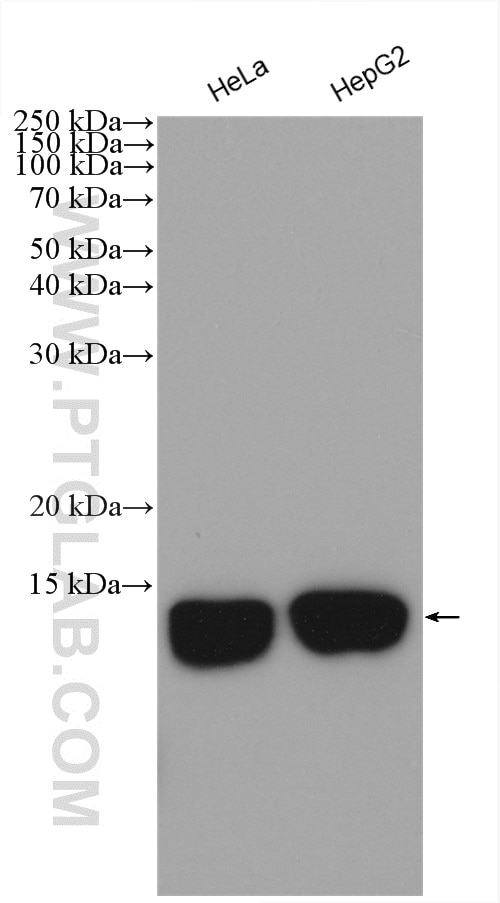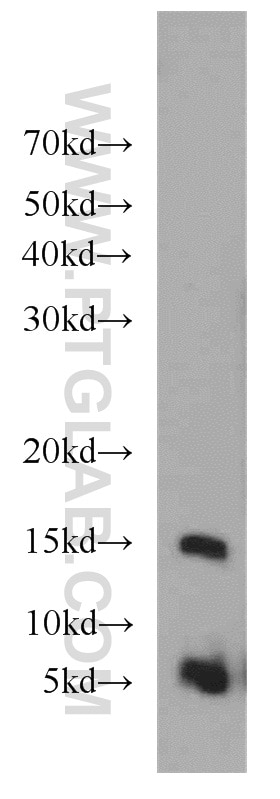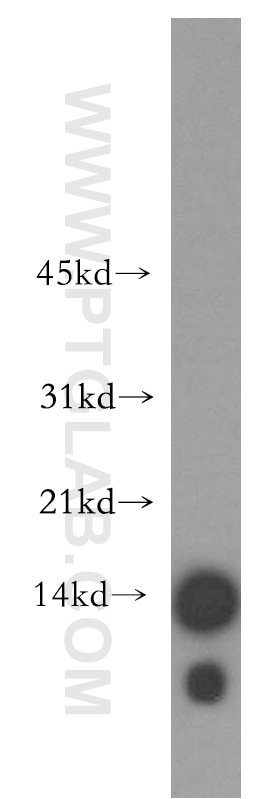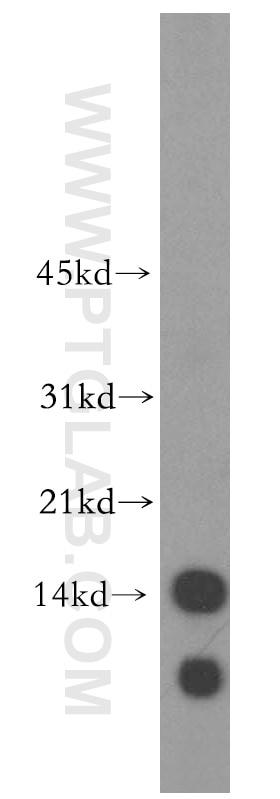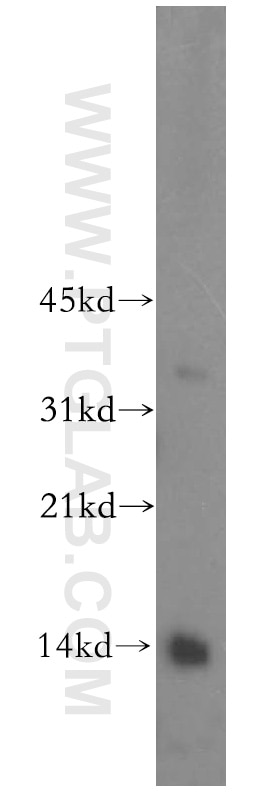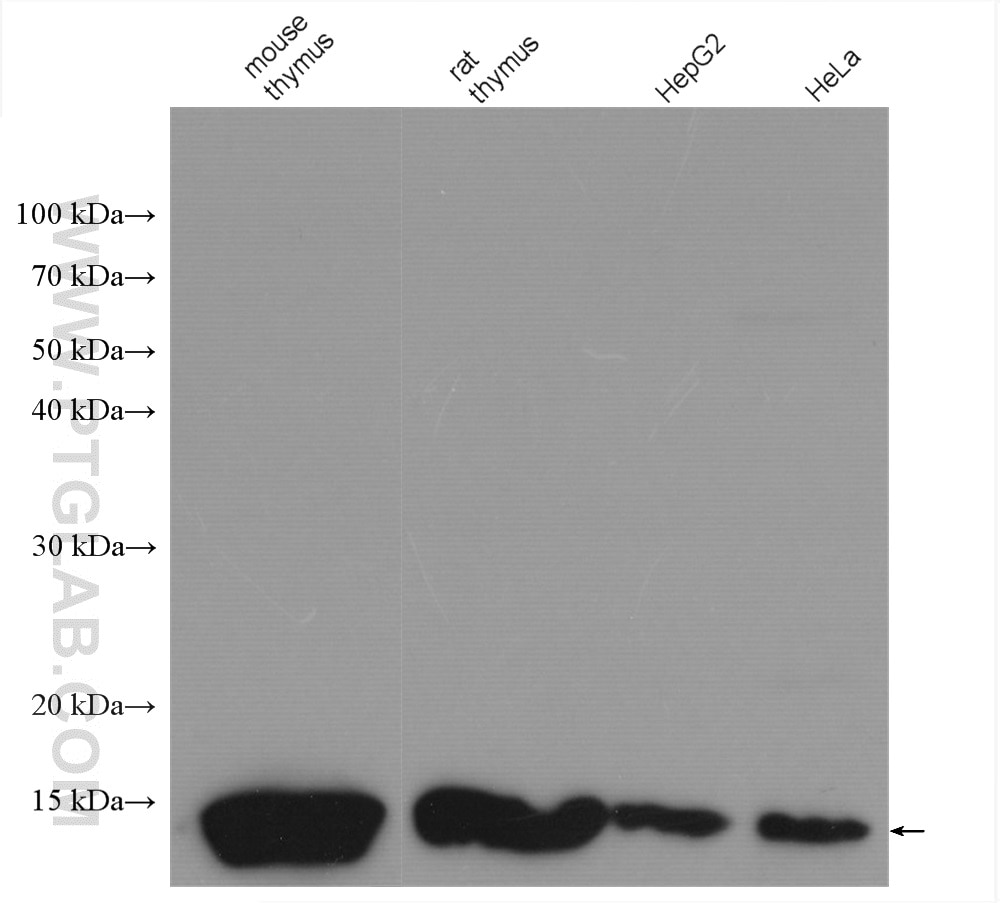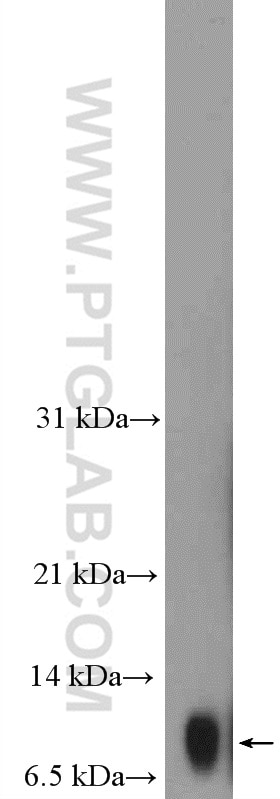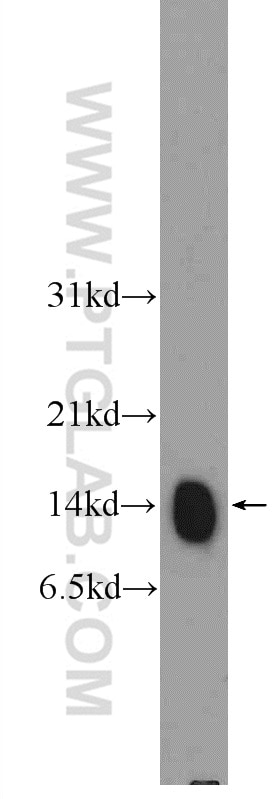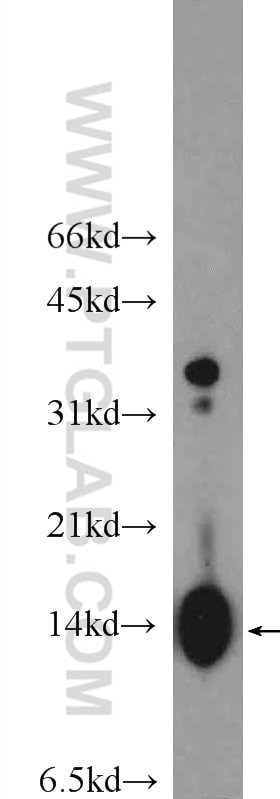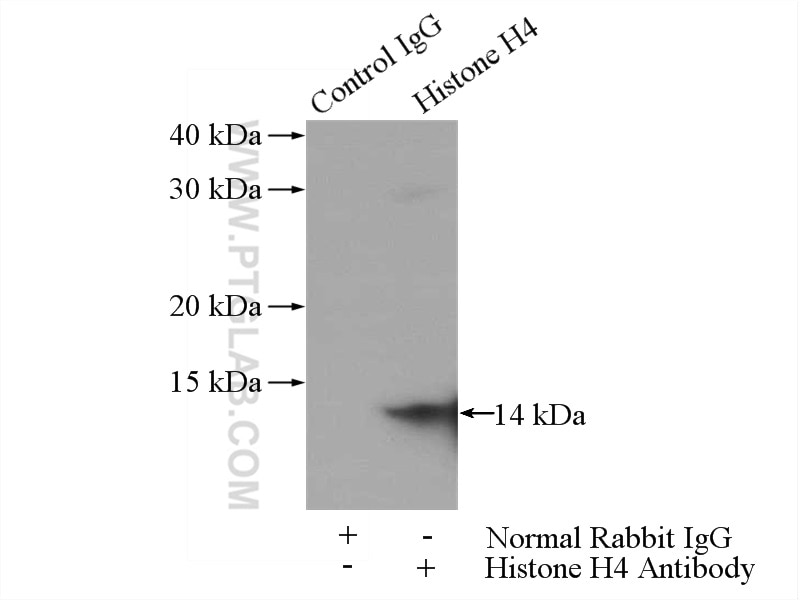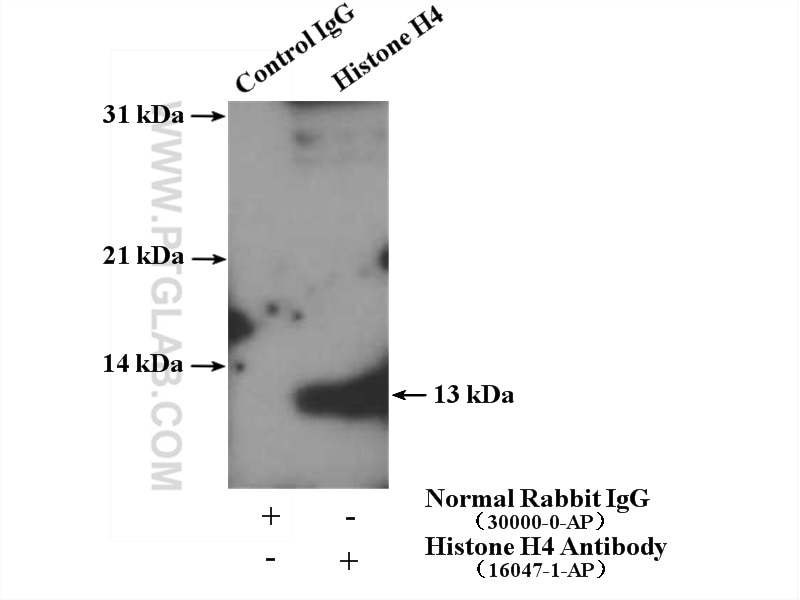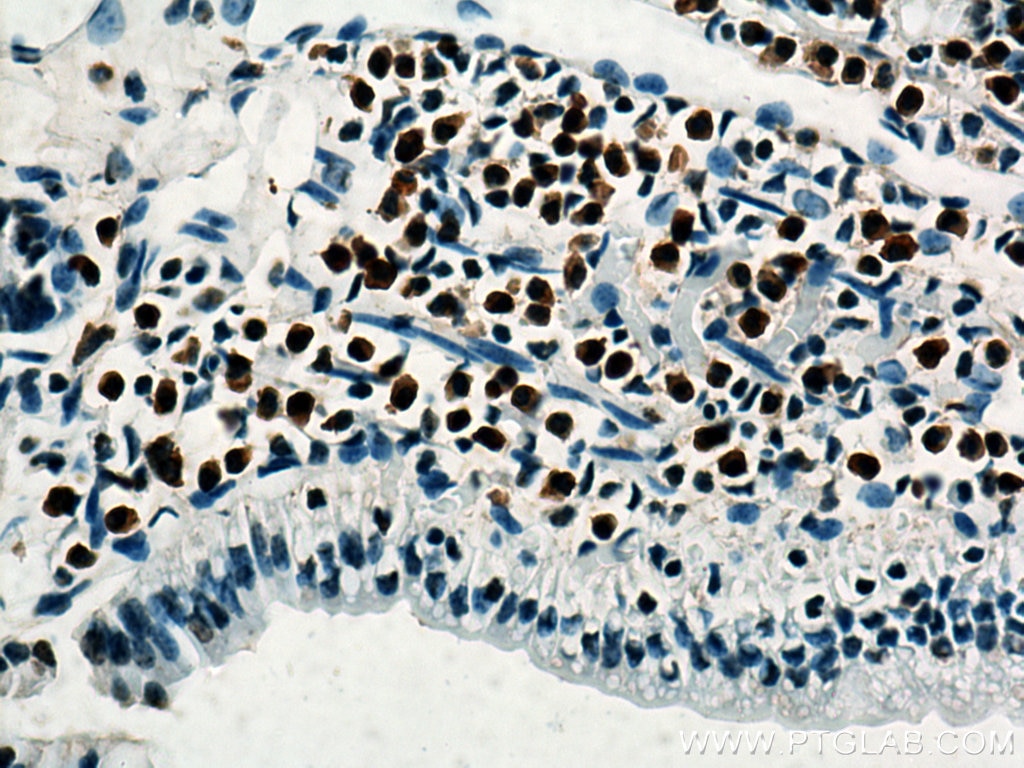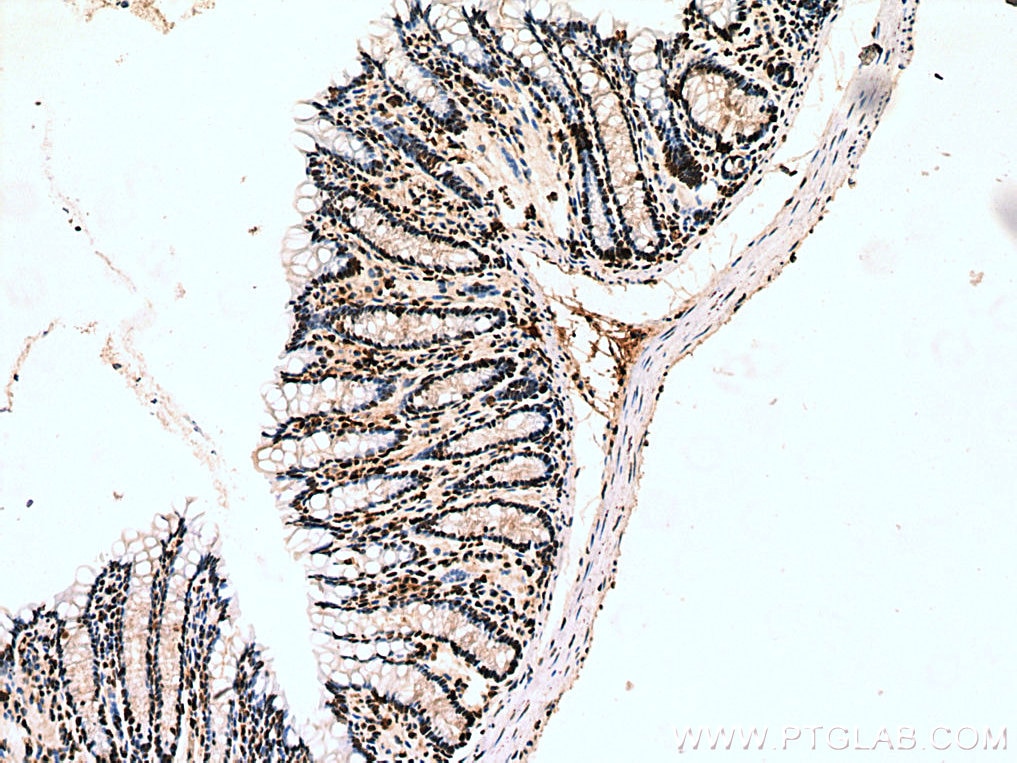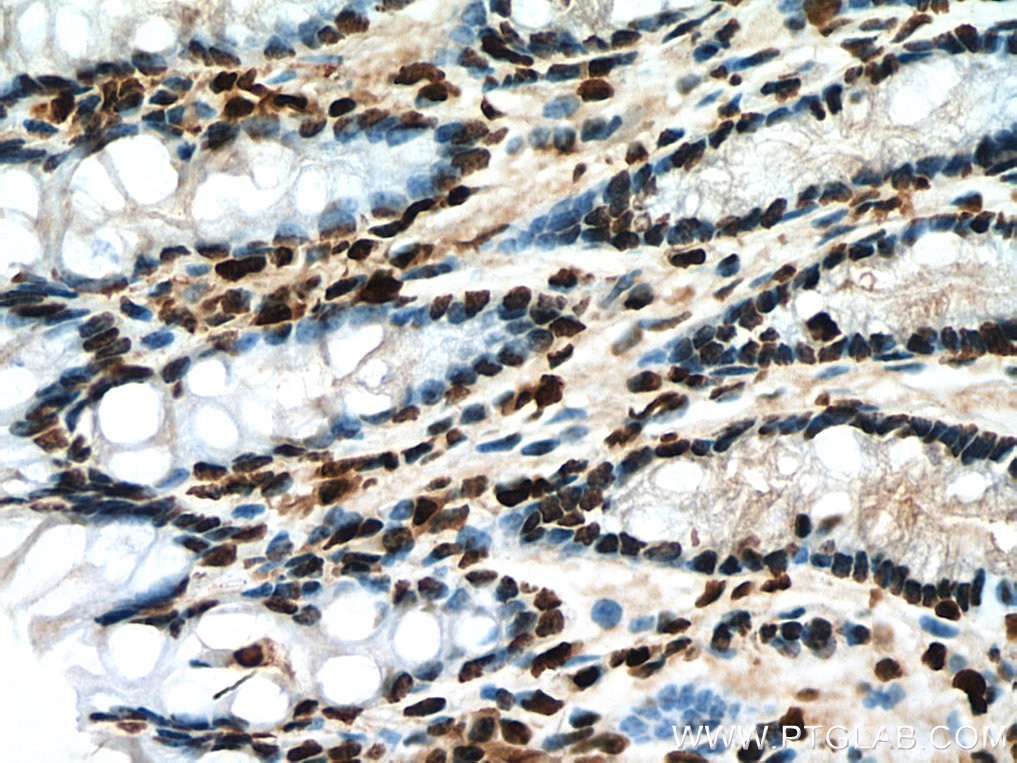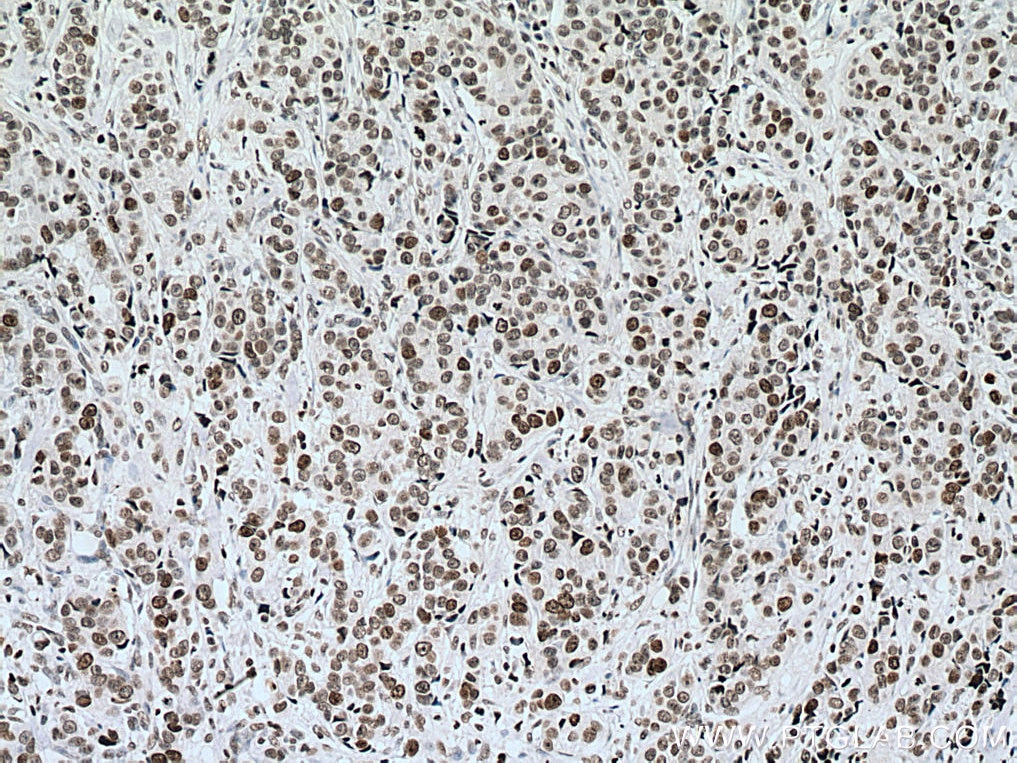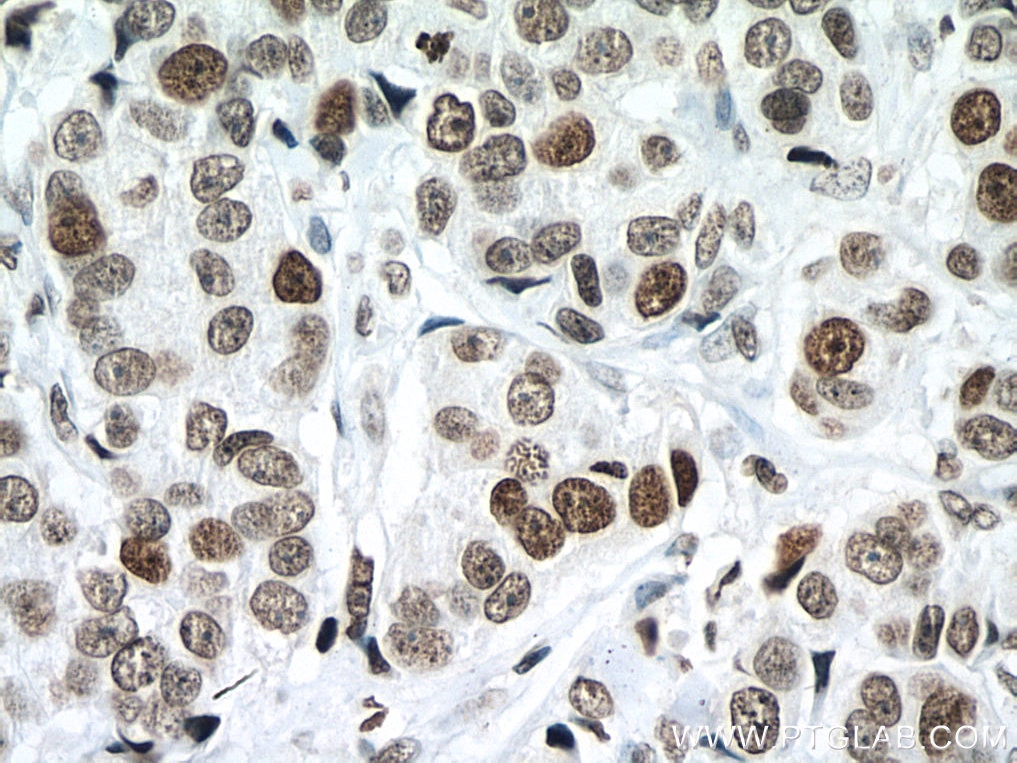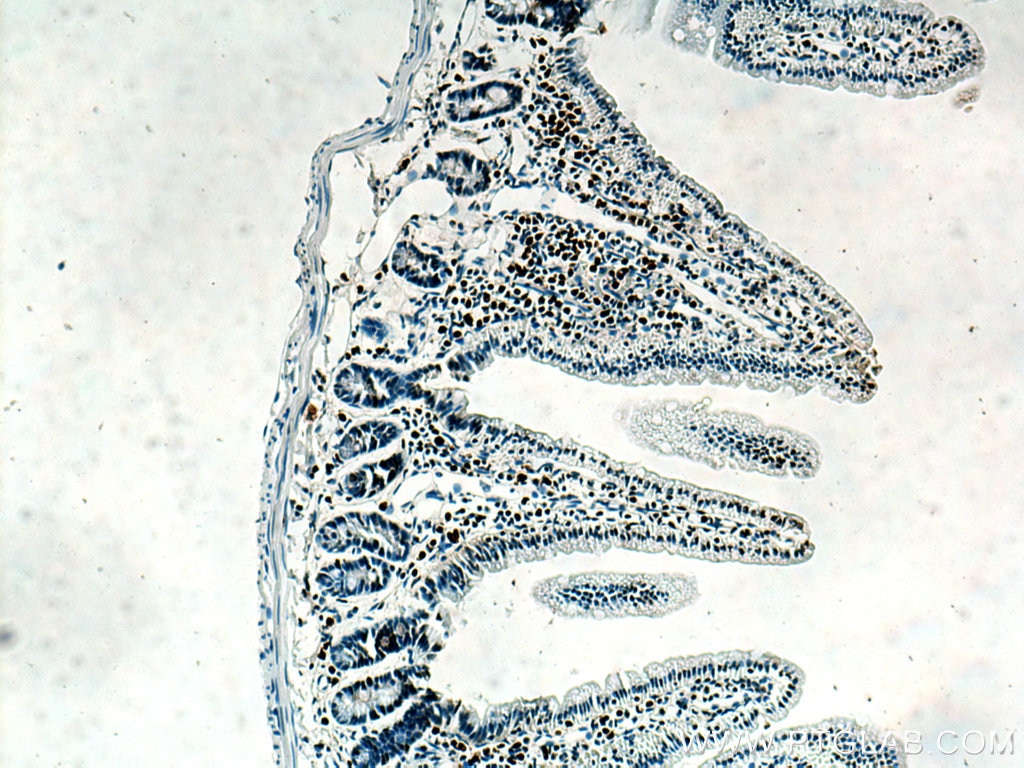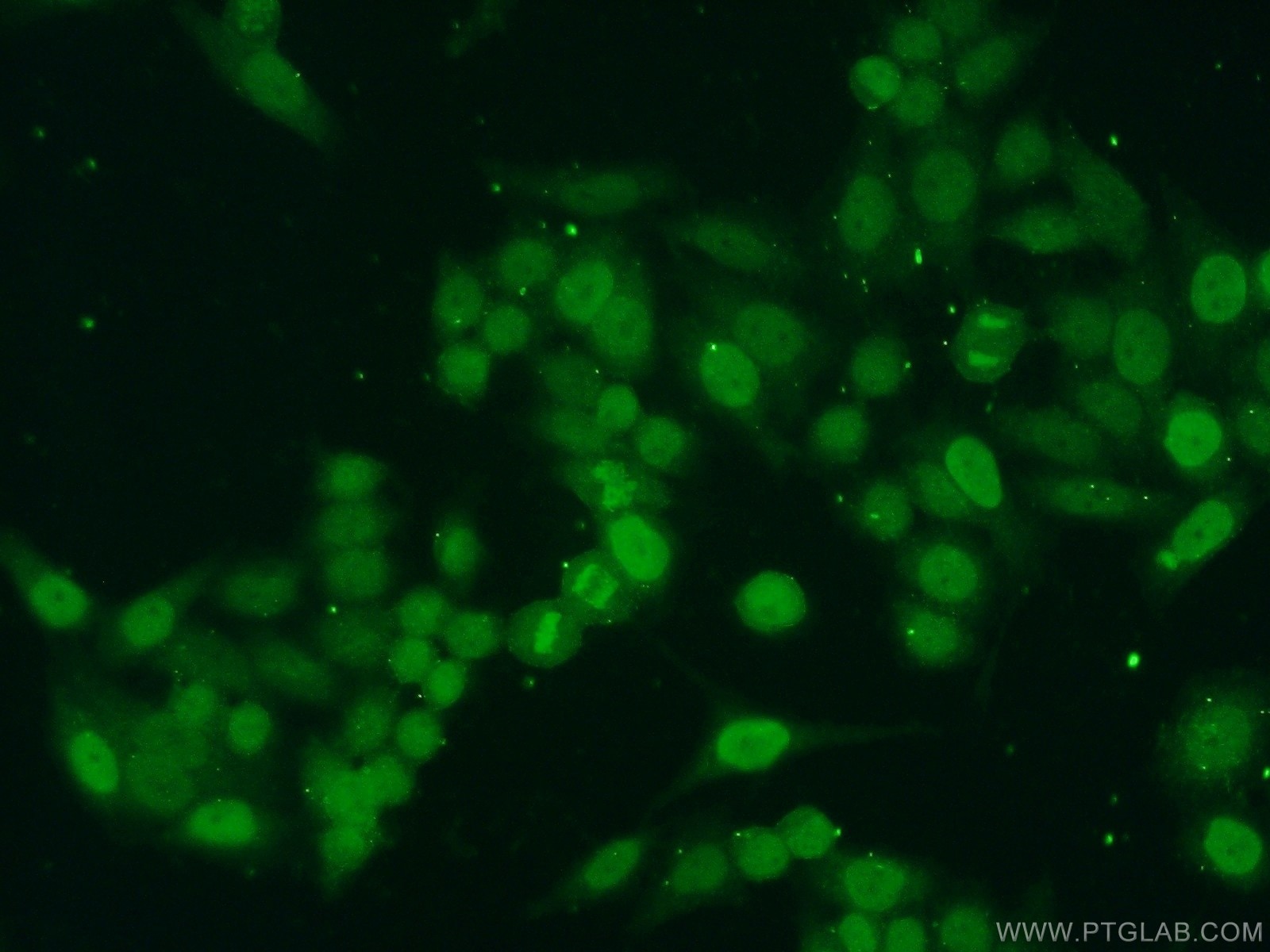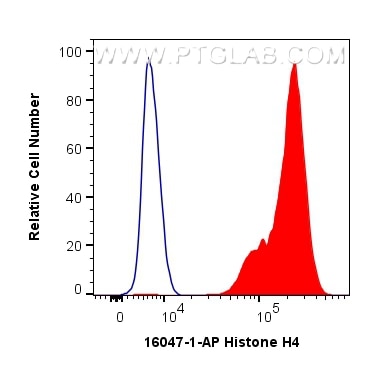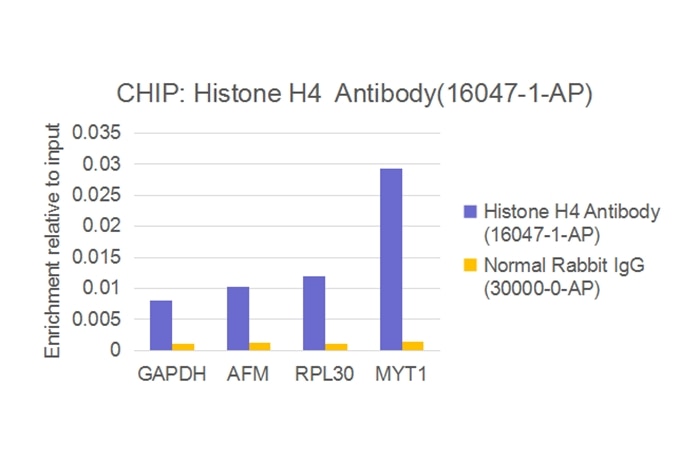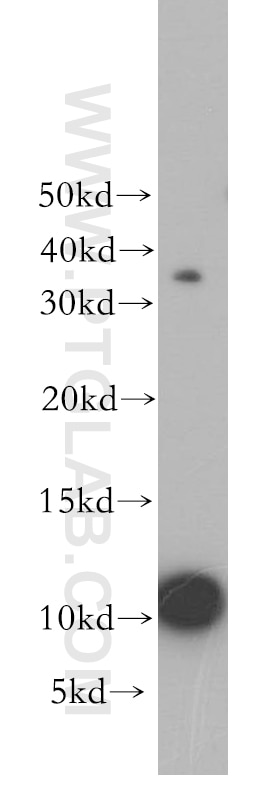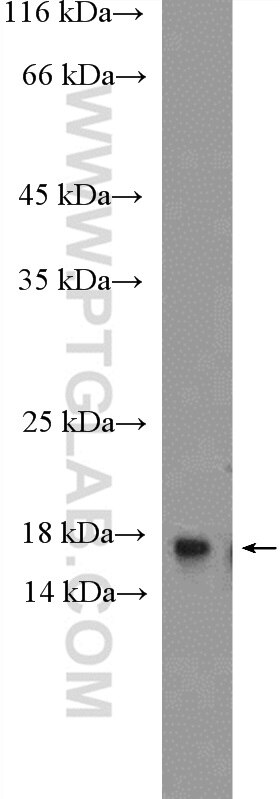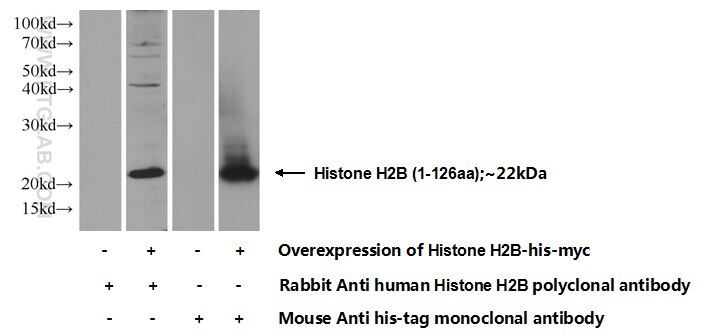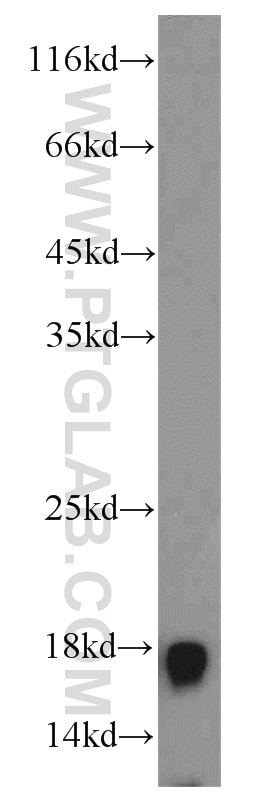- Featured Product
- KD/KO Validated
Histone H4 Polyklonaler Antikörper
Histone H4 Polyklonal Antikörper für ChIP, FC, IF, IHC, IP, WB, ELISA
Wirt / Isotyp
Kaninchen / IgG
Getestete Reaktivität
human, Maus, Ratte und mehr (3)
Anwendung
WB, RIP, IP, IHC, IF, FC, CoIP, ChIP, ELISA
Konjugation
Unkonjugiert
Kat-Nr. : 16047-1-AP
Synonyme
Galerie der Validierungsdaten
Geprüfte Anwendungen
| Erfolgreiche Detektion in WB | HeLa-Zellen, HepG2-Zellen, HT-1080.Zellen, Mausnierengewebe, Maus-Thymusgewebe, MCF-7-Zellen, Ratten-Thymusgewebe |
| Erfolgreiche IP | HeLa-Zellen |
| Erfolgreiche Detektion in IHC | Maus-Dünndarmgewebe, humanes Mammakarzinomgewebe, Maus-Kolongewebe Hinweis: Antigendemaskierung mit TE-Puffer pH 9,0 empfohlen. (*) Wahlweise kann die Antigendemaskierung auch mit Citratpuffer pH 6,0 erfolgen. |
| Erfolgreiche Detektion in IF | HeLa-Zellen |
| Erfolgreiche Detektion in FC | HeLa-Zellen |
| Erfolgreiche ChIP | HEK-293-Zellen |
Empfohlene Verdünnung
| Anwendung | Verdünnung |
|---|---|
| Western Blot (WB) | WB : 1:500-1:1000 |
| Immunpräzipitation (IP) | IP : 0.5-4.0 ug for 1.0-3.0 mg of total protein lysate |
| Immunhistochemie (IHC) | IHC : 1:400-1:1600 |
| Immunfluoreszenz (IF) | IF : 1:20-1:200 |
| Durchflusszytometrie (FC) | FC : 0.40 ug per 10^6 cells in a 100 µl suspension |
| CHImmunpräzipitation (IP) | CHIP : |
| It is recommended that this reagent should be titrated in each testing system to obtain optimal results. | |
| Sample-dependent, check data in validation data gallery | |
Veröffentlichte Anwendungen
Produktinformation
16047-1-AP bindet in WB, RIP, IP, IHC, IF, FC, CoIP, ChIP, ELISA Histone H4 und zeigt Reaktivität mit human, Maus, Ratten
| Getestete Reaktivität | human, Maus, Ratte |
| In Publikationen genannte Reaktivität | human, Hausschwein, Hefe, Maus, Ratte, Rind |
| Wirt / Isotyp | Kaninchen / IgG |
| Klonalität | Polyklonal |
| Typ | Antikörper |
| Immunogen | Histone H4 fusion protein Ag8999 |
| Vollständiger Name | histone cluster 1, H4e |
| Berechnetes Molekulargewicht | 102 aa, 11 kDa |
| Beobachtetes Molekulargewicht | 14 kDa, 11 kDa |
| GenBank-Zugangsnummer | BC012587 |
| Gene symbol | HIST1H4E |
| Gene ID (NCBI) | 8367 |
| Konjugation | Unkonjugiert |
| Form | Liquid |
| Reinigungsmethode | Antigen-Affinitätsreinigung |
| Lagerungspuffer | PBS mit 0.02% Natriumazid und 50% Glycerin pH 7.3. |
| Lagerungsbedingungen | Bei -20°C lagern. Nach dem Versand ein Jahr lang stabil Aliquotieren ist bei -20oC Lagerung nicht notwendig. 20ul Größen enthalten 0,1% BSA. |
Hintergrundinformationen
Histone H4 is a 103 amino acid protein, which belongs to the histone H4 family. Histone H4 localizes in the nucleus and is a core component of nucleosome. Nucleosomes wrap and compact DNA into chromatin, limiting DNA accessibility to the cellular machineries which require DNA as a template. Histones thereby play a central role in transcription regulation, DNA repair, DNA replication and chromosomal stability. DNA accessibility is regulated via a complex set of post-translational modifications of histones, also called histone code, and nucleosome remodeling.
Protokolle
| Produktspezifische Protokolle | |
|---|---|
| WB protocol for Histone H4 antibody 16047-1-AP | Protokoll herunterladen |
| IHC protocol for Histone H4 antibody 16047-1-AP | Protokoll herunterladen |
| IF protocol for Histone H4 antibody 16047-1-AP | Protokoll herunterladen |
| IP protocol for Histone H4 antibody 16047-1-AP | Protokoll herunterladen |
| FC protocol for Histone H4 antibody 16047-1-AP | Protokoll herunterladen |
| Standard-Protokolle | |
|---|---|
| Klicken Sie hier, um unsere Standardprotokolle anzuzeigen |
Publikationen
| Species | Application | Title |
|---|---|---|
Cell Insights into Nucleosome Organization in Mouse Embryonic Stem Cells through Chemical Mapping.
| ||
Cell Res Mutual dependency between lncRNA LETN and protein NPM1 in controlling the nucleolar structure and functions sustaining cell proliferation. | ||
Cell Res SUMO suppresses and MYC amplifies transcription globally by regulating CDK9 sumoylation. | ||
Nat Commun Cis- and trans-resveratrol have opposite effects on histone serine-ADP-ribosylation and tyrosine induced neurodegeneration. | ||
Autophagy The Paf1 complex transcriptionally regulates the mitochondrial-anchored protein Atg32 leading to activation of mitophagy. | ||
EMBO J Decreased synthesis of ribosomal proteins in tauopathy revealed by non-canonical amino acid labelling. |
